January
East Falls Past – Queen Lane Manor
The Fallser, January 2013, by Wendy Moody
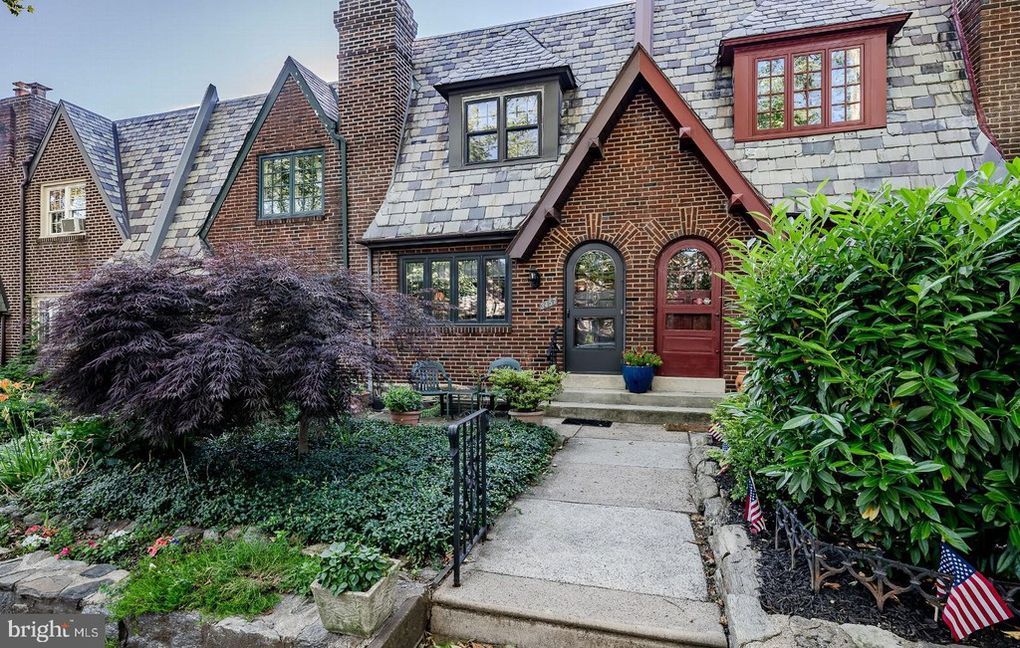
In 1916, the Weekly Forecast reported plans for a “large building operation” in East Falls – 41 houses, all alike, to be erected by builder Thomas Gavaghan “on the south side of Queen Lane, Bowman Street, Vaux Street, and the north side of Queen Lane.”
The architect, Joseph Tyrrell, described the homes this way: “The houses will be of the type usually found in the exclusive sections of Philadelphia, with the most modern improvements, such as parquetry floors, hot-water heat, sunken bathtubs, and stationary washtubs in the cellar, with outside entrance to the same. The usual coal range has been dispensed with, and in its place is an up-to-date gas range.
“The houses will have an artistic porch, large and well-lighted rooms; in fact, everything usually found in a house selling for $7000-$8000, while the price placed on these homes will be within the reach of every family desirous of living in comfort to which they are entitled.
“These houses will have a 10’ terrace front and a 10’ entrance porch of Colonial design. The vestibule will have tile floors and wood-paneled wainscot, finished in light oak. The door between the vestibule and the dining-room will have a full-length leaded glass panel. The living room (19’6” x 14’7”) will have a picturesque open stairway leading upstairs. On the opposite side of the room will be a handsome design of desk mantel, and the end of the room will be an arched opening to the dining room (14’ x 14’9”). This room will be finished in white enamel and light oak alternately. The lighting fixtures for this room will be a modern design of light combination gas and electric fixtures in the center and two electric candle brackets over the mantel. In one corner will be a door leading to a large coat closet under the stairway. This room and the living room will have a parquetry floor. The simplicity of the room with its beautiful doors and arch will form a picture that will please the most critical purchaser.
“The kitchen will be finished light oak or white enamel as may be desired and will be fitted with a large cabinet gas range, a new type dresser closet, a pot and pan closet and an excellent system of lighting. At the rear will be a frame extension for storage or a pantry; from the kitchen will be a stairway leading to the laundry in the basement, which will have a modern laundry stove and water boiler and washtrays.
“The bathroom, besides having a sunken white porcelain tub and tiled floor and walls (to 6’6”), will have a nickel-plated shower, a pedestal with nickel-plated fittings and a medicine closet above, a white enamel water-closet outfit with modern low-down tank, and a large linen closet.
“The balance of the second floor will consist of three large bedrooms, all finished in white enamel with mahogany doors, and seven large closets. The interior wood finish throughout will be of first quality hard wood.”.
February
East Falls Past – Louise Halstead
The Fallser, February 2013, by Wendy Moody
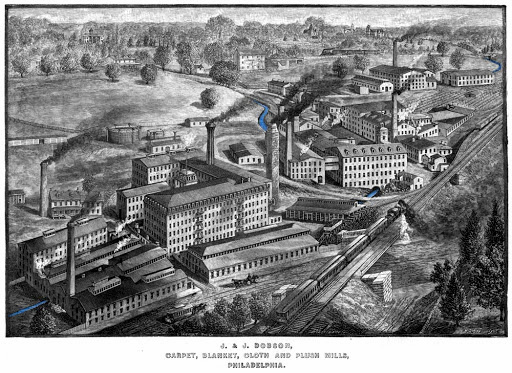
In a 1981 interview, Louise Halstead, age 99, recalled her life as a worker at Dobson’s Mills. Some excerpts:
Where were your parents from?
They came to Philadelphia from Lackalona County, near Scranton, with ten of their twelve children. They settled in Dutch Hollow – that’s where mom grew her family. They got work at Dobson’s – they had a mill here that made carpet, cloth, plush, everything. They were the only big industry.
Did you work there too?
Yes, for years and years. I went to work when I was 13 and worked there until the mill closed, must have been in the 50’s.
How did you get the job?
The man next door to us was a boss weaver and he got me a job burling. Burling
was taking the little knots out of the yarn to make it a smooth piece of cloth after it came from the weaver. Then you cut the selvage. I didn’t have a pretentious job – I also sewed numbers on cloth.
That’s what you did for years?
Yea. Dobson’s was very good to East Falls. We started from thin air and made carpet. Made carpet out of thin air… that’s how it all was, you know – we had nothing to start with but you would finish with a roll of carpet.
What were the working conditions like?
You couldn’t talk to your boss like you can now because there was always someone waiting for your job so you had to be careful. You would never get rich but it kept our family of 10 going. We handed all the money over to our parents.
Where did you live?
Dobson’s Row, between Allegheny and the railroad. We had a pump in the middle of the street where we got our drinking water and water for the house. It was a good pump. It was an ordinary house that we rented from Dobson’s.
Can you describe a typical work day?
We arrived by 6:30 a.m. and finished at 6 at night, with 45 minutes for lunch – we’d walk home for lunch. We were paid $3 a week.
Tell me about your father.
He was an engineer upstate, but when he came here it was flooded with engineers so he had to take whatever he got. He wound up as a lamplighter. He filled the lamp with oil in the morning. At night he’d put the lights on until the next day. If there was a thunderstorm, Pop was out in it. We might as well have been out ourselves because we were so concerned. I think the family was closer than it is today.
Tell us about your schooling.
I went to school until I was 13. It was called Forest School, right off Ridge, not far from Dobson’s Mills. We learned right off the blackboard where our lessons were written. The teachers didn’t put up with much foolishness and would give you a couple of raps on your fingers…
East Falls Past – Timeline of East Falls
The Fallser, March 2013, by Wendy Moody
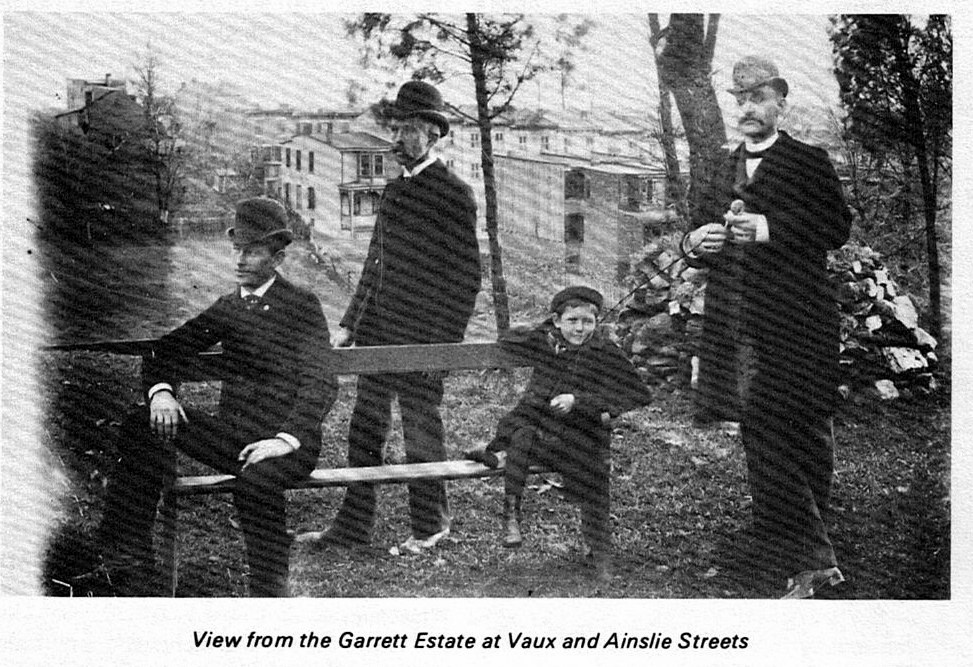
March already! For the “March of Time,” we are offering a timeline of East Falls. It’s a fun way to get a quick perspective on how our neighborhood developed:
1600 – The Lenni Lenapes are the first residents of East Falls, calling the Schuylkill Ganshewahanna – “Noisy Waters.”
1668 – Grist Mill erected at the mouth of Wissahickon (now Philadelphia Canoe Club)
1677 – 1680 – Garrett Garrettson, a Swede, buys land from the Indians and builds the first house in East Falls – a one-room log cabin (at Vaux and Ainslie).
1686-89 – Robinson Mills built at Ridge Avenue and the Wissahickon.
1731 – Known for catfish and waffles, The Falls Tavern (originally Fort St. David’s Hotel) at the foot of Indian Queen Lane, is granted a license to sell liquor.
1732 – Wealthy Welshmen from Philadelphia build the first fishery in Falls, the resort of Fort St. David’s.
1752 – The Nicklin home, later known at “Abbottsford,” is built (site of Medical College).
1776 – According to legend, Godfrey Schronk caught 3,000 catfish in a single day in the falls (white water rapids) of the Schuylkill.
1777 – Continental Army encamps here Aug. 2-8. Generals Washington and Lafayette headquarter in farmhouses. William Smith’s home on Plush Hill is occupied by Gen. Stephens. (Smith was Provost, University of Pennsylvania).
1779 – “Netherfields”, the first home on School House Lane, is built.
1800 – Joseph Neff establishes first kindergarten in United States on Midvale Avenue.
1816 – 19 – William Smith donates land to the community for education and worship. The Old Academy is built on this land, the first community center in Philadelphia.
1834 – The first train passes through Falls on its way to Manayunk.
1835 – Laurel Hill cemetery is chartered.
1847 – Firm of Powers, Weightman & Harrison purchase land along Ridge Road to build their chemical plant. They also build employee homes on “Laboratory Hill.”
1851 – The Old Yellow Schoolhouse is erected (Forest School.)
1855 – Dobson Mills is built on Scott’s Lane.
1857 – Henry Becker, a German stone mason, builds a brewery in Dutch Hollow (Arnold & Creswell).
1870 – Jacob Hohenadel takes over Becker’s brewery, becoming the Falls Park Brewery.
1875 – James Dobson builds home “Bella Vista” (now Abbottsford Homes).
1876 – Two-family homes, built at Ainslie & Conrad, are billed as “houses of the future.”
1894 – Another Hohenadel Brewery is built at Conrad & Indian Queen Lane.
1913 – The famous evangelist Aimee Semple McPherson holds a revival meeting in hilly woods around Midvale and Vaux.
1913 – Falls of Schuylkill Library opens with a great celebration.
1913 – A new post office is built on Midvale Avenue.
1914 – “White Corners” at Henry and Schoolhouse is built for Daniel Carstairs.
1919 – Anne Weightman Walker Penfield, at one time the world’s richest woman, deeds her house, “Ravenhill,” to the Catholic church for a girl’s school.
1929 – Ground is broken for Women’s Medical College.
1932 – Old Academy now houses a theatre group.
1933 – The East Falls train station is built.
East Falls Past – Lee Snyder
The Fallser, April 2013, by Wendy Moody
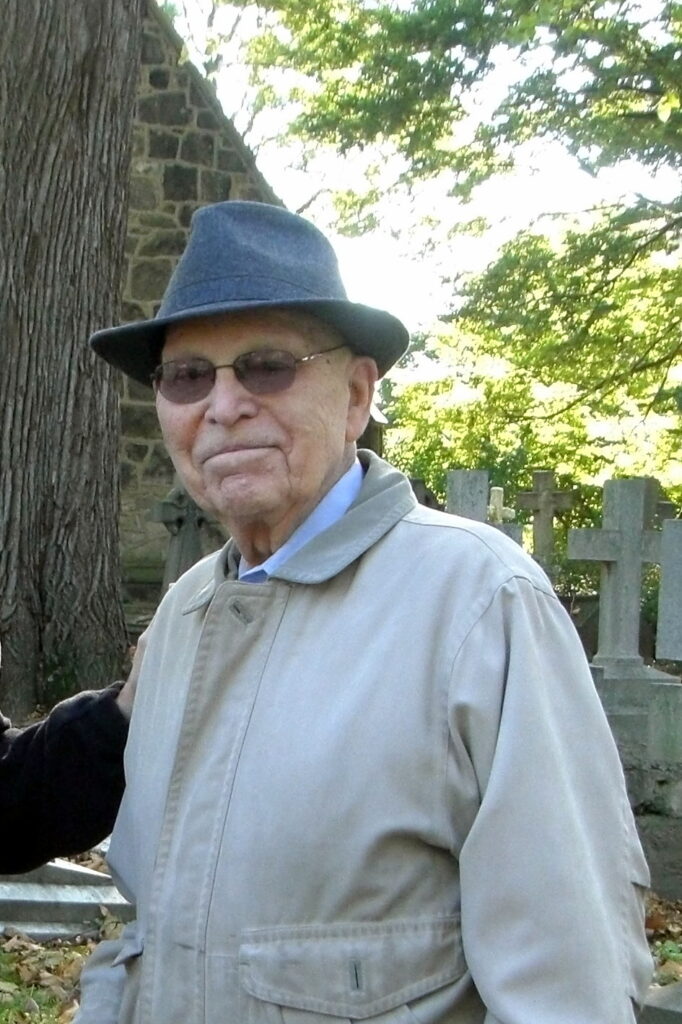
In 2010, Ken Hinde interviewed longtime East Falls resident Lee Snyder, Ph.D. for the East Falls Historical Society’s Oral History Project. With Dr. Snyder’s death in March, we lost a gem. A professor at Philadelphia University and an involved resident, he had a unique perspective.
Where were you born?
In 1921 in a little town in northeast Pennsylvania called Drums. My father, a bookkeeper, came from a family of Welsh miners.
What did you want to be when you grew up?
In 7th grade I read in The Book of Knowledge about building the first cantilevered bridge in Scotland. That fascinated me. I thought I’d like to build bridges – I might have been an engineer. I also liked designing houses. I was fascinated by technical things.
Your career was English, though. Where did you study?
Muhlenberg College in Allentown, majoring in classics. I received a scholarship for the University of Chicago but World War II came and I was drafted. After WWII, the University still honored my admission. By then I was interested in English.
After studying German for five years, French 2, Italian 2, Latin 8, and Greek 4, I took the course History of the English Languageand realized so much English vocabulary comes from different languages. I thought, boy, this really turns me on. Philology is not linguistics – it focuses on studying a language in order to interpret its literature. I was accepted at Penn for my PhD in 1947.
When did you begin working at Philadelphia Textile Institute?
1957, as an English instructor, though there was no English Department. The emphasis was still on textiles. I taught composition, introductory literature, and electives like American Autobiography, which I enjoyed. I stayed 34 years.
You advanced through the ranks?
Well, yes. I became Chairman of the Humanities and Social Sciences Department, a presidential appointment. After 15 years, the faculty decided to have an elected chairman and I was elected.
Where was your office on campus?
That was a long-standing problem. After first sharing an office, they put all 14 faculty members in one room with just desks, no cubicles. Eventually they said we could move to the White House administration building (2nd floor) but only if we agreed to enter by way of the fire escape!
A ‘tradesmen’s’ entrance?
Yes! Everybody objected; eventually they relented. As chairman, I had my own office. No longer together in a big room, we lost touch, so I started having wine and cheese in my office every Friday – that continued for years. Sometimes the Dean would come. When the college bought Ravenhill, we moved there.
What changes have you seen in East Falls? The post office was near St. Bridget. It was dinky – you had to squeeze in. In my teens, I remember seeing, near Ridge and Midvale, a 19th century inn where people came to have catfish and waffles. It reminded me of New Orleans with the iron fretwork balconies.
East Falls Past – Aimee Semple McPherson
The Fallser, May 2013, by Wendy Moody
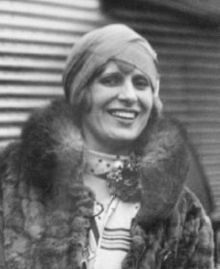
Aimee Semple McPherson (1890 – 1944), the most famous woman evangelist in the world, was 27 when she preached in East Falls, in August, 1918. Still a nobody in the world of big-time evangelism, Aimee’s Philadelphia appearance made her a star, according to Philadelphia Magazine.
Billy Sunday, already a millionaire, and 650 other evangelists roamed the country. McPherson wondered if she would ever reach prominence. She slept in leaky tents, went without food, and wore the same white blouse and black skirt week after week as she ministered to the poor in camp meetings – but confessed, years later, that these early days were her happiest.
When Aimee came to Philadelphia (our city’s first nationwide camp meeting), her life changed.
On the tree-studded bluff overlooking Midvale Avenue near 34th Street (Vaux St.) – the present site of Falls Presbyterian Church – were hundreds of white tents, with the great Tabernacle tent in the midst. “Crowds numbering from 3000 to 10,000 persons flock to the big tent nightly,” said the Philadelphia Public Ledger. “When the baptism of the Holy Ghost descends upon a worshiper, he shouts, sings, leaps or mutters incoherent sounds, while others sway over the straw heaped before the altar, where they lay motionless and rigid.”
By any standards, the meetings were a grand success.
The first meeting came off to a jarring start. Word had spread to Manayunk and Roxborough that some fanatical “holy rollers” were preaching heresies and brainwashing the weak-minded into madness. Gangs prowled the campground and surged into the Tabernacle tent, mocking and jeering. Aimee could not outshout the rioters so she led the congregation in hymn-singing. The next day, she called on area preachers. “Persecution of one faith allows persecution of all faiths,” she said in the sweetly sensual tone which was to become her trademark. The pastors agreed, demanded police protection, and scolded the youth of their congregation. The meetings continued uninterrupted thereafter.
In the following weeks, scores came up the sawdust aisles for salvation. Others got the Holy Spirit, speaking in tongues. Sister Aimee became the only “Miracle Lady Evangelist” in the country. The Public Ledger quoted her: “People are having remarkable cures” – a four year old walked for the first time, a woman was cured of cancer, another of eye trouble. Newspaper stories like these swelled attendance.
By the time the meeting ended in early September, Aimee’s name was known in religious circles everywhere and invitations came from all over the country. She bought an Oldsmobile to carry her equipment on a cross-country trip and became the first woman to drive coast to coast. Less than five years after Philadelphia, she built the multimillion dollar Angelus Temple in Los Angeles.
Her colorful life included two marriages, a disappearance, and accusations of alcoholism, fraud, adultery and misappropriation of funds. But her disciples, numbering in the 100,000s, continued to hail her as the “Queen of Heaven.” She stayed on this throne for 20 more years, until, in 1944, she died of an overdose of sleeping pills.
East Falls Past – East Falls History Quiz
The Fallser, June 2013, by Wendy Moody
Note from web editor: The quiz is available as a PDF document. Click here to download it.
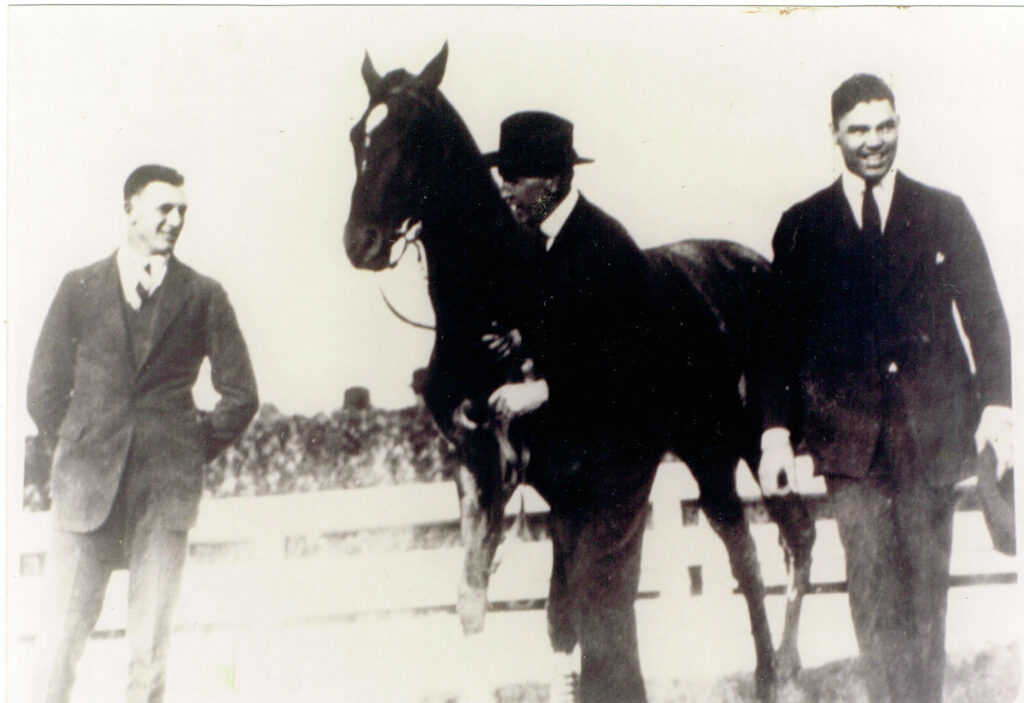
How well have you been paying attention to this column over the last eight years? Well, it’s time for your first pop quiz! Actually, this quiz was created back in 1982 for the Century IV Celebration at the Falls Library. It was given to neighborhood children to test their knowledge of East Falls history. If you read the photo caption, you already have one right…
1. ___ First people to live in East Falls
2. ___ First fishery in East Falls
3. ___ Company that manufactured blankets for the Union Army
4. ___ Established the first kindergarten in U.S. on Midvale Ave. (1808)
5. ___ East Falls signer of the U.S. Constitution
6. ___ East Falls playwright awarded Pulitzer Prize in 1925
7. ___ Local public school prior to Mifflin
8. ___ Symbol on Falls Library weathervane
9. ___ Estate formerly on property that was Medical College of Pa
10.___ Hollywood Oscar winner and Princess
11. ___ Once the wealthiest lady in the U.S.
12. ___ Lane where Hohenadel built his brewery
13. ___ Racehorse that once romped over East Falls fields
14. ___ Site of old brewery between Reading RR and Midvale
15. ___ Editor of the 1930’s Suburban Press
16. ___ Theatre in East Falls where a star was born
17. ___ Revolutionary War general headquartered in McMichael Park
18. ___ Well-established Indian path before Penn crossed the Atlantic
19. ___ Olympic sculling champion in 1920
20. ___ Name of James Dobson’s estate
21. ___ Revolutionary War general who camped on site of Queen Lane reservoir
22. ___ Originally the country estate of Joseph Sims
23. ___ Stokely, Fox, McMichael, Henry, Vaux, Conrad, Cresson
24. ___ Home of William Weightman
Answers: 1– K, 2– R, 3– L, 4– S, 5-I, 6– W, 7- J, 8- O, 9- U, 10- D, 11- T, 12- V, 13- G, 14- E, 15 – Q, 16- F, 17- B, 18- A, 19- P, 20- M, 21- N, 22- C, 23- X, 24- H
A. Ridge Avenue
B. Lafayette
C. Laurel Hill Cemetery
D. Grace Kelly
E. Dutch Hollow
F. Old Academy
G. Man-O-War
H. Ravenhill
I. Thomas Mifflin
J. Samuel Breck
K. Lenni Lenape
L. Dobson Mills
M. “Bella Vista”
N. George Washington
O. Catfish
P. John B. Kelly
Q. Alex C. Chadwick
R. Fort St. Davids
S. Joseph Neef
T. Ann Weightman Penfield
U. Abbottsford
V. Indian Queen
W. George Kelly
X. Mayors of Philadelphia
East Falls Past – Bob Levy
The Fallser, July 2013, by Ellen Sheehan
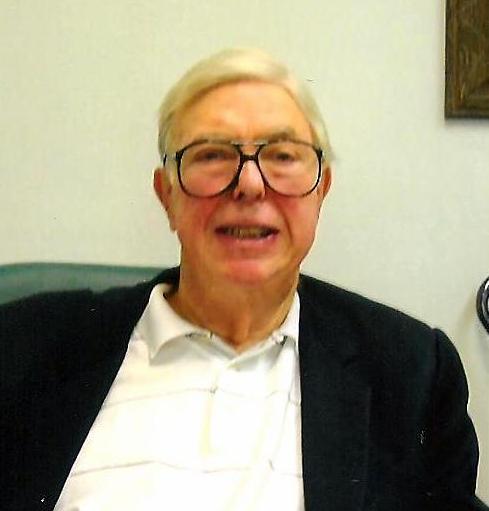
On May 10th I interviewed former East Falls’ resident Robert P. Levy at his office in Narberth. Bob lived at “White Corners,” at the corner of Henry Avenue and School House Lane. The property is now part of the campus of Philadelphia University.
What do you remember about growing up in East Falls?
I was born in center city. My parents lived in the Rittenhouse Hotel. They moved to East Falls when I was about 6 and starting school at Penn Charter. A PC grad in ’48. I went to Penn where I was active as a tennis player and with the radio station there doing play-by-play. I coached at Penn Charter; Jack Kelly (Kell) and I helped to establish a gym on the campus.
Tell me about your parents.
My mother was Blanche Paley. Born in Chicago, she moved here because her father was in the cigar business in Philadelphia, LaPalina Cigars. It was the biggest cigar company in the country.
My grandmother was Goldie Paley; she built a house across the street from us near the Henry Avenue Bridge. When my grandfather died, Goldie moved to Chestnut Hill and gave her house to Textile (now Phila U). My father, Leon, was from south Philly, a graduate of Southern High. He went to Penn and became a Dentist. One of his patients was Barbara Stanwyck. A research building at Penn is named for him. He wasn’t making enough money as a Dentist, however, so he started a radio company, WCAU. It became a TV station later on.
Did you meet any famous personalities?
Yes, Frank Sinatra, Bing Crosby, lots of Hollywood stars…they all stayed at our house. My father and his brother, Ike, were friends with Manny Sacs; Manny knew all the Hollywood people. Sinatra stayed with us whenever he performed at the Latin Casino or the 500 Club. .
Did he marry Ava Gardner at White Corners?
I’ll tell you what happened. My parents went to London and said to me, “Now, don’t get into any trouble.”
Frank and Ava were to be married at “White Corners” but all the reporters were hanging around there so they decided to get married at Manny Sac’s house on Walnut Lane in Germantown. A friend of mine, Ronny Phillips, enticed the butler to dress in a tuxedo and the maid in a wig. Ronny drove the limo with them in the back seat. We went down School House Lane with all the reporters in tow and into Manny’s house. Of course, the reporters were furious when they found out the wedding was taking place somewhere else!
East Falls Past – Bob Levy #2
The Fallser, August, 2013, by Ellen Sheehan
On May 10th I interviewed Robert P. Levy at his office in Narberth. The Levy house, known in East Falls as “White Corners” stands at School House Lane and Henry Avenue and is now part of Philadelphia University.
Did you know Grace Kelly?
Yes, Grace Grew up down the street from us on Henry Avenue. Our fathers were very close. Her father started the Atlantic City Race Track and my father was his partner. When John B. Kelly died, my father took over the business. In the summer Grace would stay at our house if the family was at Ocean City. One night I had a friend over and Grace came in with a date. We didn’t like the boyfriend. He was a jerk. We just sat there and wouldn’t leave because we didn’t want her to be alone with him.
What was your impression of Grace?
She was nice. She wasn’t a movie star. She went to the Steven’s School with my sister. I was a life-long friend of her sister, Lizanne.
Tell me about your sister.
Her name was Lynne. She married Chuck Barris, who was an emcee on “The Gong Show” and some other shows. My sister died a few years ago. I am still friends with Chuck.
How long did the family remain at “White Corners?”
Well, I left when I was married in 1955, but my mother lived there until she died. I gave the house to Penn Charter because I thought they could use it as a middle school. But they eventually sold it at a very reasonable price to Textile.
Have you been back to the house since it was sold?
Yes, I went there unannounced one day and met the Director of Admissions for Textile. She took me through. They did a beautiful job of renovating the house. It was gorgeous. I was very happy with it.
How did you meet your wife?
I met Rochelle at a New Year’s Eve party in Florida. I was twenty-four when we married in 1955. We lived at the Presidential Apartments on City Line Avenue and then moved to Bryn Mawr. We have been married for fifty-seven years and have five children and thirteen grandchildren. It’s very nice, we see them a lot.
September
East Falls Past – Firehouse
The Fallser, August 2013, by Wendy Moody
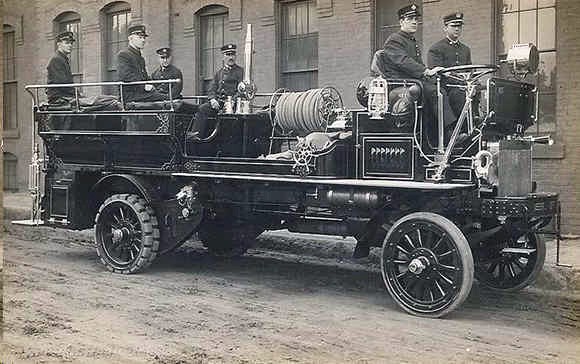
“Motor Vehicles at Local Fire House! Combination Wagon and Fire Engine.}
A 1915 headline in Falls’ Weekly Forecast, boasted this exciting news – an engine to replace the horse-drawn one. Thomas Wilcox, Jr., President of the Falls Business Men’s Association, made public his letter from City Hall which read, in part:
May 28, 1915
Dear Mr. Wilcox,
In reply to your letter asking for the installation of motor-drive fire apparatus, I beg to advise that in the recent letting there is included a new engine and new combination wagon, both to be motor-driven, for use in the Falls.
Mr. John Smithies, your Councilman, has been on the job constantly in this matter, and I promised him many months ago that out of the next letting your section would be cared for.
Trusting this will give you the information desired, I remain,
Very truly yours,
George Porter, Director
Department of Public Safety
Seven months later the equipment arrived:
“At last the long-made promise has been fulfilled. The new motor combination chemical wagon was installed at the fire house and tomorrow the tractor-propelled fire engine will be delivered. The fire laddies are rejoicing over their new machine.
“The combination chemical wagon is a Mock motor-driven vehicle, having a 48 horsepower engine, developing speed of 40 mph. It weighs 13,000 pounds. The front wheels have single solid rubber tires, while the rear has twin ones. The headlights and tail lights are electric. A large searchlight is placed at the driver’s seat, as are two siren horns. A pull bell is on top of the body.
“Ten men can ride on the wagon. The body of the wagon has a capacity for 2400 feet of fire hose and 350 feet of chemical hose. One 14 foot extension ladder and one 14 foot hook ladder are also carried. All the paraphernalia needed for a fire company may be found on the wagon.
“The fire engine has a double seat, one for the driver and one for his assistant, a new idea just come into use.”
Postscript:
Six months later, an article appeared complaining about the new engine.
“The engine is a pretty machine, but owing to parts of the machinery being out of order, it has stood useless in the station for seven weeks. The only other machine is an immense, cumbersome combination wagon with not enough horsepower to take it rapidly to a fire and with wheels so far apart they will not fit on the streetcar tracks, so it does bumpity-bump over the granite stone pavement. The location of the station is in a hollow (Ridge near Midvale), so that no matter what direction the fire is – up the steep hills of Falls or in hilly Manayunk – the heavy machinery must run up heavy grades.
“People are wondering why the fire engine has not been repaired and why such a cumbersome combination was ever sent to be used where there are so many hills to climb.”
October
East Falls Past – McKinley
The Fallser, October 2013, by Wendy Moody
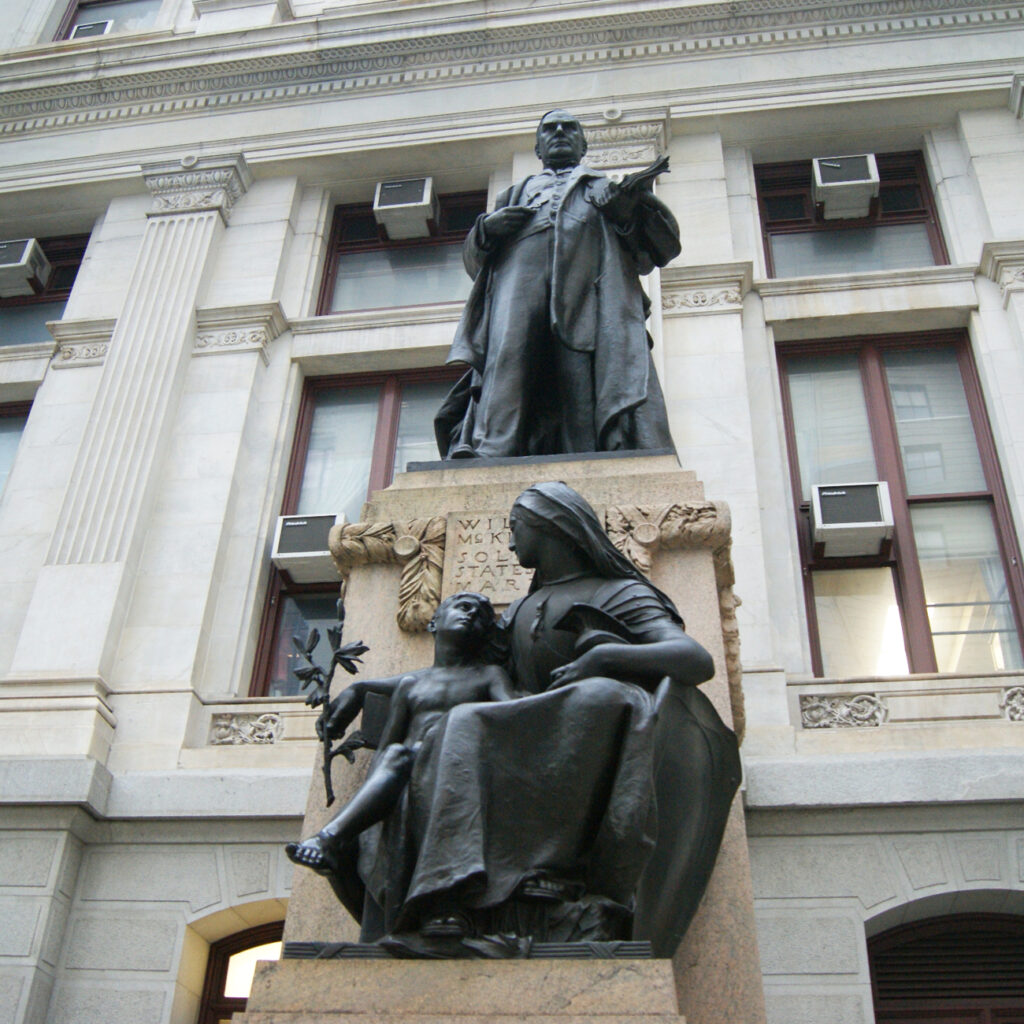
In October, 112 years ago, Falls residents were being strongly urged to contribute to the McKinley Memorial Fund, without much success.
On September 6, 1901, just six months into his second term as 25th President, William McKinley had been shot and fatally wounded by an anarchist at the Pan-American Exposition in Buffalo, New York. He died 8 days later.
The Falls newspaper, the Weekly Forecast, published a letter advocating that a local fund for the erection of a memorial for McKinley be started in the Falls, with donors being acknowledged in the paper. The first week only two donations were received, totaling $15.
The Forecast, on its front page, blasted the community:
“Is this a true reflection of the patriotism of the people of Falls of Schuylkill? We trust not… Can it be that all the mourning exhibited on the death of our beloved President was only a sham? … We trust that the delay in responding is not through indifference, but simply through neglect.”
The paper urged contributions of any amount as a tribute to a President through whose “wise and patriotic administration a whole nation has prospered, and whose life was such a beautiful example of morality and marital fidelity. Philadelphia was his chosen city and it was here that he loved to visit, so let it not be said that we failed to appreciate that friendship and were too miserly to erect a monument to his memory. It would be a permanent blot on the reputation on the very name of Falls of Schuylkill…”
The following week, only three more donations, totaling $3, were received. The Forecast lamented:
“Nothing is more disagreeable than to have to bring another to task for failing to fulfill a duty… It is utterly impossible to offer any excuse for the lack of interest manifested by the people of Falls. If they have no patriotism, they should have at least a certain amount of local pride.
“Unquestionably, the cause is being ashamed of the amount they could afford to subscribe. It is not the amount but the spirit which prompts it. If you can but afford ten cents, send it in; it will encourage others.”
The following week seven more people sent in their dimes and quarters – $3.10 worth, bringing the total to $21.10. Again the Forecast admonished:
“The Forecast has made a continued effort to interest its readers in raising a credible sum locally. Having done this, it feels its work is done. Its failure is the fault of the local residents. It will no further belittle the greatness of one to whom so many owe so much by appealing to a penurious public who have so clearly shown they have neither patriotism nor local pride.”
The Forecast turned the $21.10 over to the general fund for the erection of a Philadelphia memorial. The resulting statue, erected in 1908, by Isidore Konti and Charles Albert Lopez, can be seen at City Hall.
November
East Falls Past – Falls Library
The Fallser, November 2013, by Wendy Moody
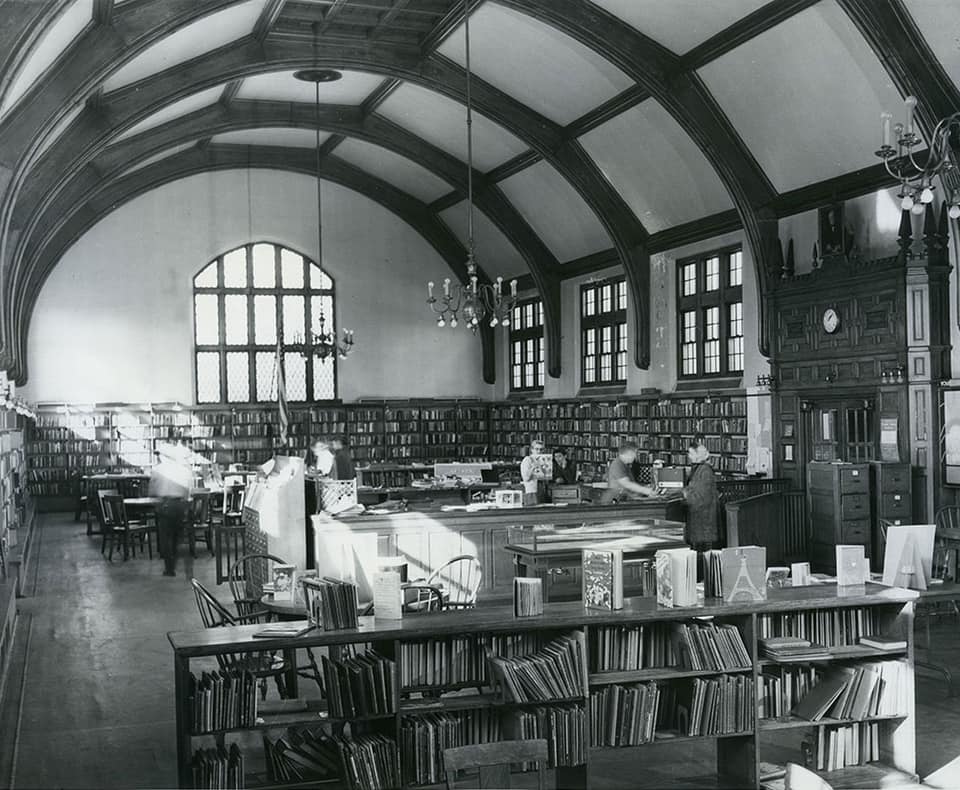
With the 100th birthday of the Falls Library on November 18, 2013, we want to share some childhood memories of the library from our oral history collection:
Before its move to Warden Drive in 1913, the library was located on the second floor of Old Academy on Indian Queen Lane (1901 – 1913). We are lucky to have two interviews with Fallsers who remembered this early library:
Ella Boyd McGlyn (1910): The library was on Indian Queen Lane. When I was seven (around the turn of the century because I working at Dobson Mills when I was 13), we’d go up the wooden steps to look at books. We would get put out for talking. The librarian would holler if we made noise coming down the stairs. Where the new library is now, there was a duck pond where my brothers skated. Ella Boyd was the librarian and she had the same name as mine!
Mary Webster (1910): When I was in the early grades at Forest School, we used to stop at the library in Old Academy to get a book. The librarian was very grumpy because we were noisy.
Harry Prime (1930’s): The library was a big Friday night place. We used to meet girls there and have fun taunting the guard. When he chased us down the steps, we would run across the street to the property of P.H. Kelly, who lived where Mifflin is now.
Robert Connolly (1930’s): I didn’t use the library too often, but I wish that I had used it more. I was paying more attention to pretty girls and football. I remember I took out Tom Sawyer, kept it out too long, and it cost me 11 cents. I remember, too, Tom Swift, boy inventor, who invented all kinds of gadgets, special watches, and phones that showed who you were talking to. Doc Savage, an inventor and scientist, did it all too. He fought the underworld with his companions. Dick Tracy…how many more?
I remember the big stone building, the large room with the high ceiling, the shelves all around. A stern-looking woman at the front desk looked to see what you were returning. Another was busy putting away books. It was very bright and neat inside and it smelled clean too. The grounds were spotless.
One could hold hands under the big tables without being seen. Friday nights were good – most of us had no money so we would gather on the library steps to talk. If we got too noisy the guard would chase us.
Joe Petrone (1940’s) The library was an island – it was the place to escape to. You could go there, sit, get a book. It was quiet. They had a book I loved that showed how to build all kinds of things – tree houses, scooters… wonderful! I’d sit there for hours looking at it. The library was a big part of life in East Falls.
December
East Falls Past – McDermott’s Candy Store
The Fallser, December 2013, by Wendy Moody
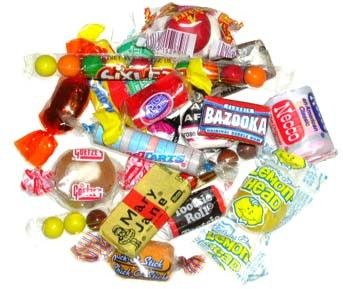
Why do children love a candy store? Residents of East Falls past can tell you why. Their favorite destination was McDermott’s, the candy store at Sunnyside Avenue and Conrad.
June Drumheller Miller, who once lived on Ainslie Street, gives a vivid description from the 1930’s:
“My sweet tooth probably developed in my youth with trips to McDermott’s. John McDermott was a tall, gaunt, nice looking man with wavy hair and a quiet, pleasant manner. Joe, a shorter man with red hair, freckles and glasses, occasionally helped out.
The store was small, with shelves all around. The counter faced us as we entered – the ice cream freezer on the left and a glass-covered case of confections on our right. John was usually seated on a high stool behind the counter as we came in clutching our pennies or nickels.
We stood in front of the case and pondered our selection of penny candies. For a penny you could get two Mary Janes, or five spearmint sticks; two pinwheels; a strip of colored “buttons” on a paper strip; or a box of candy cigarettes (four white sugar sticks with red tips that we sucked on and posed with, acting grown up).
John waited patiently as we made our decision, and we’d count out our pennies and leave with our little paper bag of sweets. If we had an extra nickel we might buy a Hershey bar, a box of Chiclets or an ice cream cone. A double dip cost ten cents, and for an extra penny you could get chocolate jimmies on top.
McDermott’s also had a back room with wrought iron tables and chairs if you wanted to sit down. Mother sometimes took me there for a real treat – a cherry ice cream soda for ten cents.
Sometimes Mother sent me to John’s with a bowl for a dollars worth of ice cream. John had a large almost-flat spoon with which he scooped out slabs of chocolate, vanilla, butter pecan or coffee – filling the bowl and then weighing it on his scale. He’d cover it up with wax paper and I’d hurry home.”
Joe Petrone:
“Joe Fitzpatrick and Mr. McDermott were partners and took turns running the store. We used to sit there and read comic books for free. “This is no library, you know!” he’d say. But I was friends with Joe Fitzpatrick, who was his son.
“McDermott’s had three telephone booths in the front. It was a nickel for a phone call. It had an old soda fountain. They would fresh-pack the ice cream into containers. I think it was Dolly Madison. And of course they had copy books, pencils, and penny candy. We’d drive the guy crazy – I’ll have one of them – no, I’ll have one of those…It all went into a little brown bag….
“It would drive him crazy if you couldn’t read and asked him to read all the ice cream flavors!”



